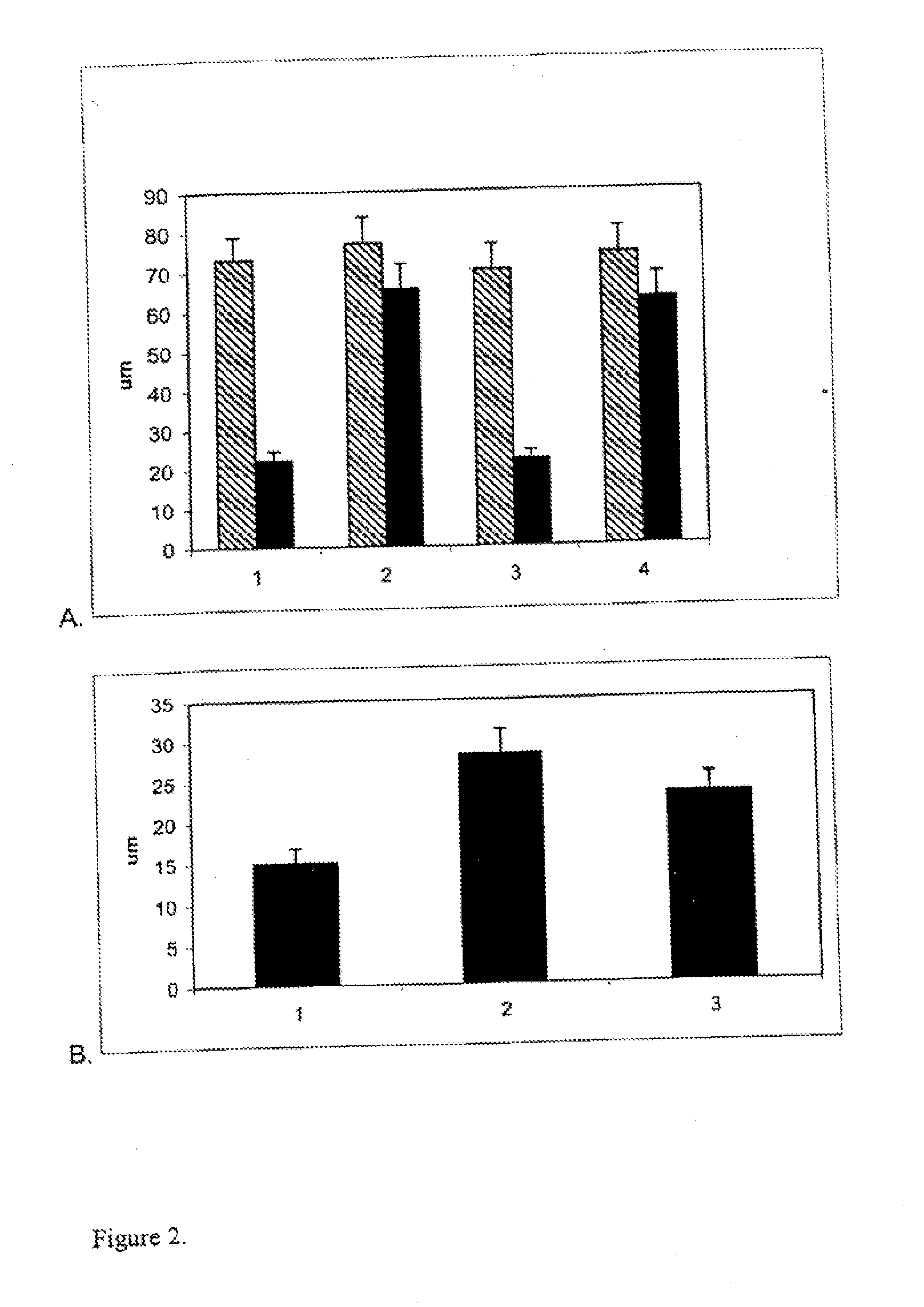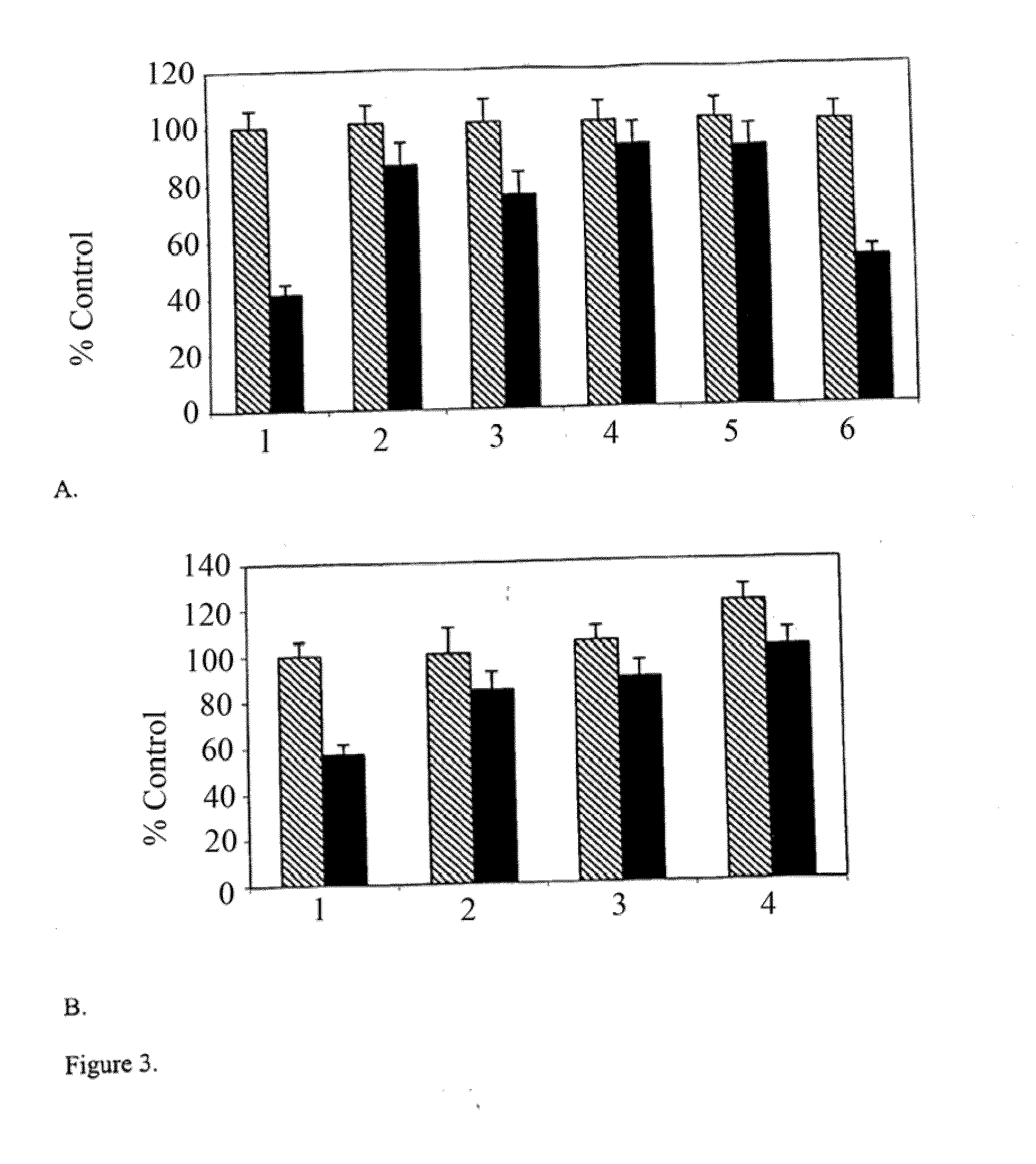Methods for stimulating nervous system regeneration and repair by inhibiting phosphodiesterase type iv
a technology of phosphodiesterase and inhibition of phosphodiesterase, which is applied in the direction of biocide, muscular disorder, drug composition, etc., can solve the problems of few effective therapeutic agents or methods for promoting neural regeneration in injured or damaged neurons, affecting the regeneration of axonal cells, and few effective therapeutic agents, etc., to achieve the effect of promoting neural growth or regeneration, inhibiting pde4 activity, and relieving myelin- or mag-mediated growth
- Summary
- Abstract
- Description
- Claims
- Application Information
AI Technical Summary
Benefits of technology
Problems solved by technology
Method used
Image
Examples
example 1
Direct Treatment of Cerebellar
[0104]Neurons with dbcAMP or Rolipram
[0105]The response of neurons to the inhibitors of axonal outgrowth (e.g., MAG, myelin) is dependent on the intracellular levels of cAMP. We thus wanted to see whether addition of rolipram, a specific inhibitor of PDE4, would enable neurons to grow in the presence of MAG.
[0106]Cerebellar neurons from P5 rats were isolated as described previously (Cai et al., 1999) Briefly, cerebellum was treated with 0.025% of trypsin, triturated and incubated for 10 min at 37° C. Trypsinization was stopped by adding an equal amount of DMEM containing 10% fetal calf serum (FCS). Cells were centrifuged at 800 rpm for 5 min. The cells were resuspended to a single-cell suspension in 2 ml of SATO (see Cai et al., 1999, herein incorporated by reference). The concentration of cells were adjusted to 6×104 cells / ml. Cells were plated in SATO media onto a monolayer of either MAG-expressing Chinese hamster ovary (CHO) cells or onto a monolayer...
example 2
Priming of Cerebellar Neurons with BDNF or Rolipram
[0108]We had previously shown that treating neurons with the neurotrophins brain-derived neurotrophic factor (BDNF) and nerve growth factor (NGF) for 6-18 hours prior to the encounter with inhibitors of axonal outgrowth (MAG and myelin), termed “priming”, conferred upon the neurons the ability to grow in the presence of MAG and myelin in vitro (Cai et al., 1999) and to regenerate in vivo (Bregman, 1998). The levels of cAMP in the neurons were elevated after priming with neurotrophins. Thus, we sought to determine whether priming with rolipram would be as effective as priming with BDNF in blocking myelin and MAG-mediated inhibition of axonal outgrowth.
[0109]Isolated cerebellar neurons in SATO media (prepared as in Example 1) were plated onto poly-L-lysine-coated dishes at 1×106 cells / dish. Where indicated, either BDNF at a concentration of 200 ng / ml, or rolipram at a concentration 0.1 uM or 0.25 uM (all from Sigma) was added. After c...
example 3
Subcutaneous Delivery of Rolipram to Rats by Injection or Minipumps: Effects on Neuronal Growth and Regeneration
A. Subcutaneous Rolipram Injections
[0111]In order to determine whether a PDE4 specific inhibitor could be used to prime neurons in vivo and prevent inhibition of neurite outgrowth by myelin and MAG, rolipram was injected subcutaneously into P12 and P30 rats every 3 hours for 24 hours. For all experiments, rolipram was dissolved in DMSO and sterile saline was added to adjust the concentrations. The final volume of the rolipram solution was 0.2 ml for each injection. At each time point, a single rolipram injection was given. Rolipram was injected subcutaneously with insulin syringes (Becton Dickinson 1 ccU-100 insulin Syringe) under the skin of the rat's neck (for all experiments) and in various other regions (only for first experiment using P12 rats). Control animals were injected with a 0.2 ml mixture of DMSO and sterile saline without rolipram, following the same schedule...
PUM
| Property | Measurement | Unit |
|---|---|---|
| Time | aaaaa | aaaaa |
| Time | aaaaa | aaaaa |
| Time | aaaaa | aaaaa |
Abstract
Description
Claims
Application Information
 Login to View More
Login to View More - R&D
- Intellectual Property
- Life Sciences
- Materials
- Tech Scout
- Unparalleled Data Quality
- Higher Quality Content
- 60% Fewer Hallucinations
Browse by: Latest US Patents, China's latest patents, Technical Efficacy Thesaurus, Application Domain, Technology Topic, Popular Technical Reports.
© 2025 PatSnap. All rights reserved.Legal|Privacy policy|Modern Slavery Act Transparency Statement|Sitemap|About US| Contact US: help@patsnap.com



